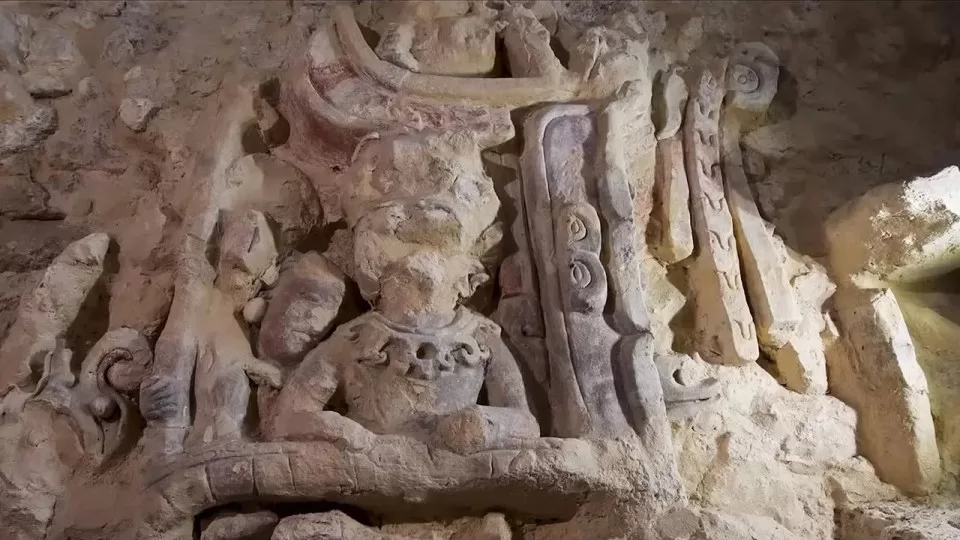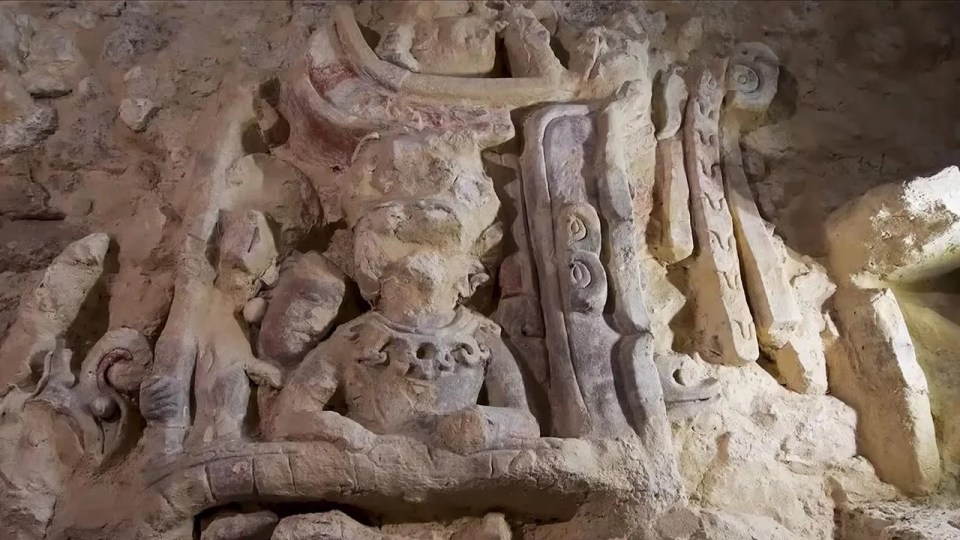ARCHAEOLOGISTS have unearthed rare carvings on an ancient Mayan ball court depicting a powerful snake-themed dynasty.
Excavators have uncovered three stucco reliefs that depict scenes of the Kaanu’l rulers in Quintana Roo, Mexico.
The site, in Dzibanché, was an early centre for the Maya and dates back to 300BC.
Since 2023, a 100-person team has worked extensively at Dzibanché, uncovering relics including the Temple of the Owl, the Temple of the Cormorants, and sections of an acropolis.
But the new reliefs date to the Early Classic period of the civilisation around 500 to 600AD.
The decorations were discovered on two platforms near the site’s ballgame court – a ceremonial space for the Mayan sport.
The sport was an activity combining athleticism and ritual devotion.
The image of snakes is used in the reliefs as the ruling dynasty – the Kaanu’l rulers – associated itself with the animal to look strong.
Sandra Granados, head of the dig, described the discovery as a breakthrough.
She said: “Although we had found stucco reliefs on larger buildings, we would never have thought of finding such decorated façades on a ball court with such profound meanings as these ones apparently have.”
Each of the three relief scenes offers a glimpse into the mythological and celestial beliefs of the Mayan rulers.
The first relief features two figures standing guard beside a pedestal with symbols referencing a Kaanu’l ruler.
The second scene depicts ancestral figures in a cosmic setting, surrounded by stars and intertwining serpents – motifs that reflect the Kaanu’l’s divine connection as rulers.
The third panel portrays a series of mythological animals linked to constellations.
The Kaanu’l dynasty used snakes to position itself as intermediaries between the gods and people to build its legitimacy to rule.
According to INAH, “This representation of intertwined snakes indicates that we are looking at images with which the rulers of Dzibanché sought to reaffirm their ancestry or lineage.”
The reliefs, now white, still retain traces of the original colours including red, blue, yellow, and black paint.
The archaeological team is now employing advanced photogrammetry techniques to create detailed models and save and preserve the designs.





